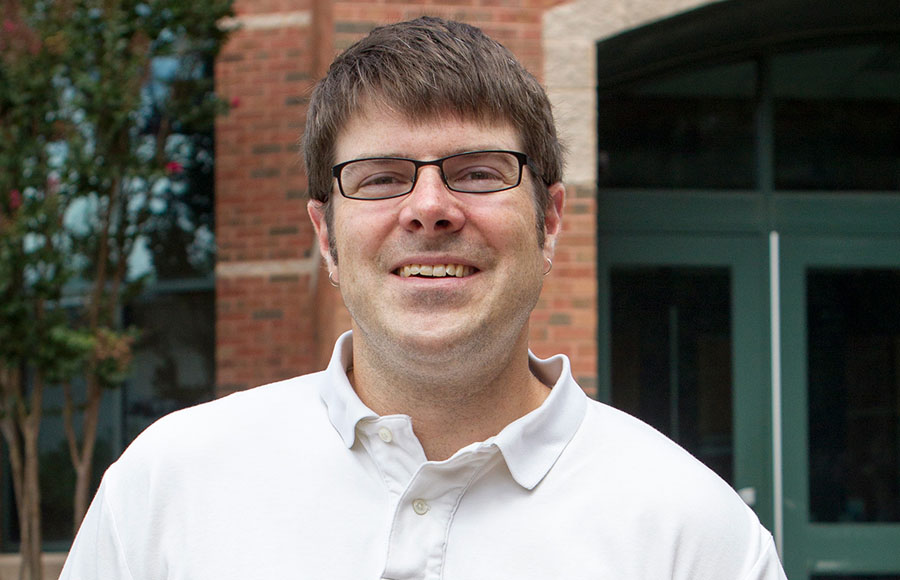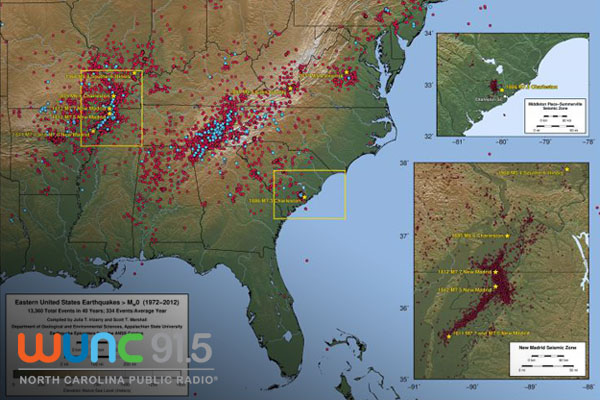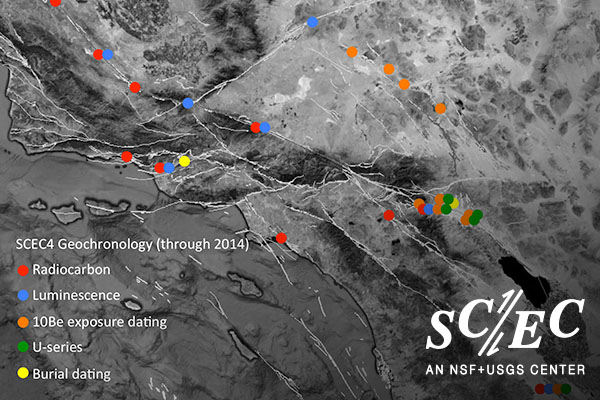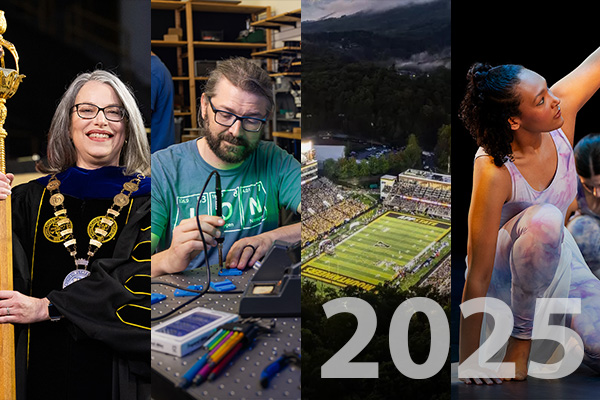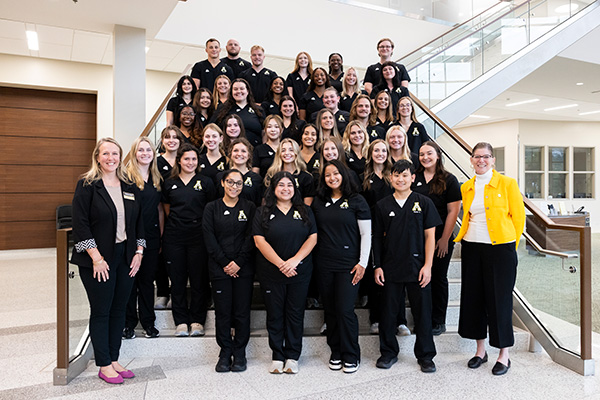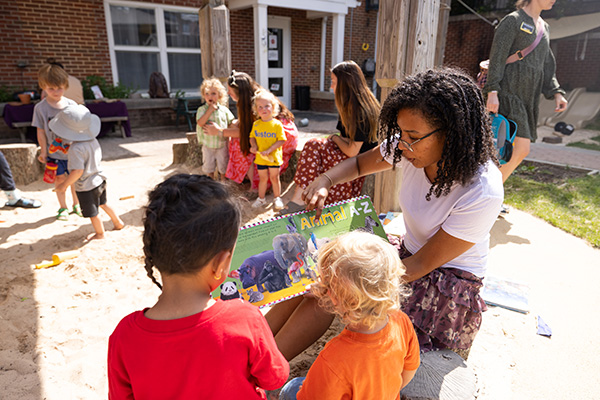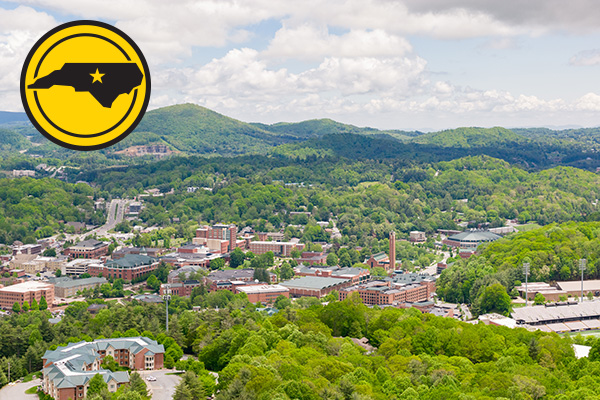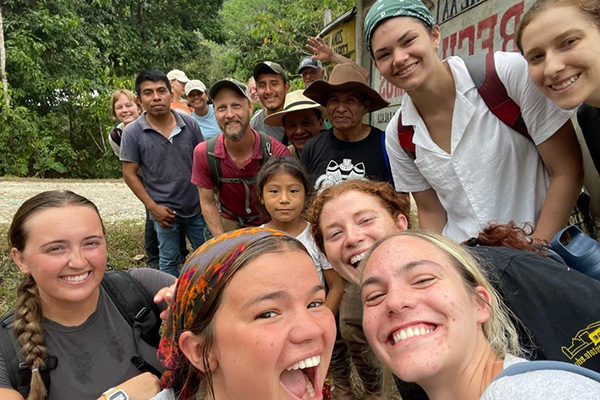Dr. Scott Marshall, a geophysicist in Appalachian State University’s Department of Geology, finds earthquakes fascinating. Marshall is interested in knowing what’s below the observable surface.
“That’s one of the fundamental tenants of geophysics: learning how to image the subsurface,” said Marshall. “If you can see the rocks, you hire a geologist. If you can’t see the rocks, you hire a geophysicist.”
Marshall recently received additional funding from The University of Southern California’s Southern California Earthquake Center (SCEC) for advanced geodetic imaging of deformation rates throughout the Ventura Special Fault Study Area Region. In other words, Marshall uses satellite images to map where faults are and how fast they are moving. He has been funded consecutively since 2013, for a total of $87,000.
Satellite data can help map fault lines in the subsurface of Southern California. In response to the often-asked question, “Is Los Angeles going to eventually fall into the ocean?” Marshall instead revealed something more incredible. “Los Angeles,” he said, “is headed northwest.” Pointing to evidence on his computer screen, he showed the incremental movement of the Los Angeles region northwestward. “If it keeps going like this for millions of years, it’ll brush up against San Francisco.”
This information comes courtesy of satellite data received from space – Global Positioning System (GPS) data. “The same network of satellites that most people use to find the best coffee in town can also be used to map out earthquakes and faults,” quips Marshall.
“This is an exciting time to be a geophysicist,” Marshall said. “There is now satellite-based technology that allows you to see things not possible just 10 years ago. We can measure a millimeter of movement per year from space – accurately.”
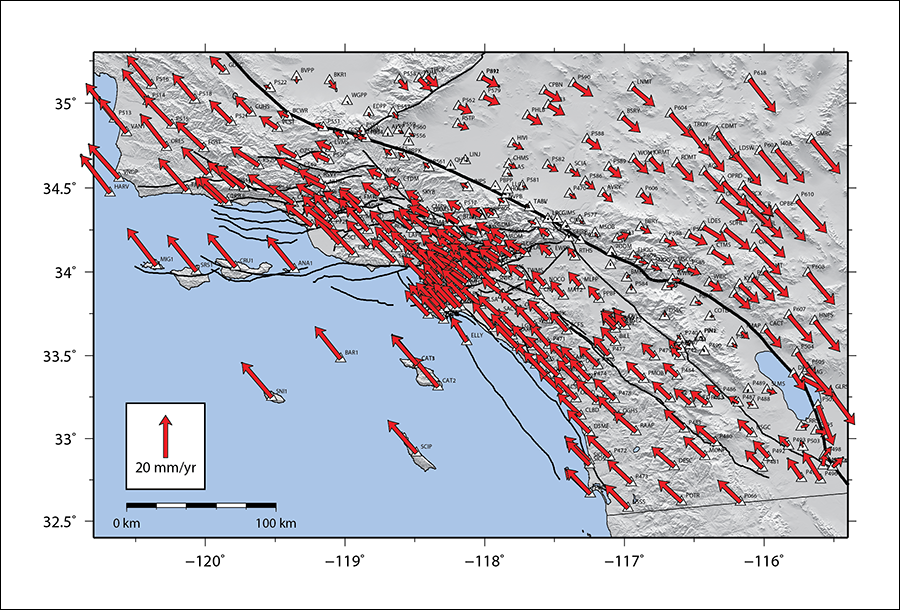
Global Positioning System (GPS) data shows horizontal motion along the San Andreas fault (shown by the heavy black line) in southern California. The size of the arrow shows the tectonic plate velocities relative to the San Andreas fault. Note that the region west of the San Andreas is moving northwestward relative to the rest of North America. This data was processed by undergraduate geology major Hannah Krueger as part of her senior honors thesis. The image contains approximately 350 GPS velocities that are mathematically computed using various time series analyses. Image courtesy of Scott Marshall
Marshall’s research “tries to predict where faults are and how fast they are moving.” This data helps California with building codes, determining which areas are most at risk from earthquakes, and which buildings will need to be retrofitted in order to have a chance to survive an earthquake.
With the data Marshall accumulates, regions like southern California can use the information to make events like these as survivable as possible.
As Marshall pointed out, earthquakes alone do not kill people. Much of the damage is done by collapsing buildings and houses. The sort of structure you are in when a quake happens is far more important than your proximity to a fault line.
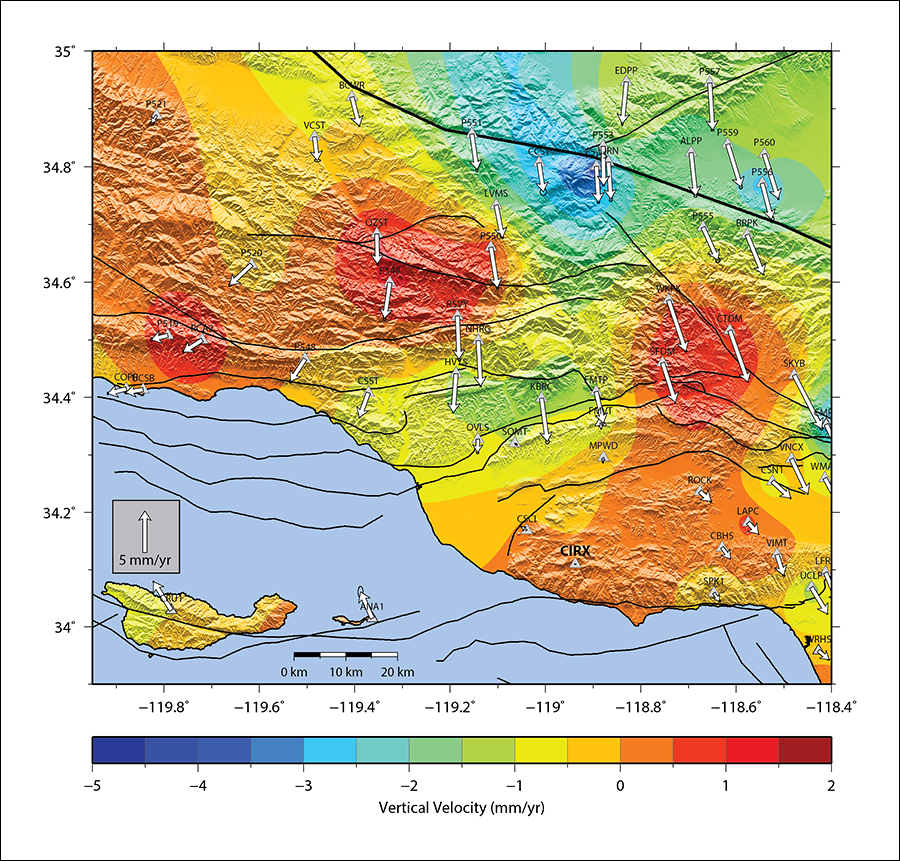
GPS velocities in the Ventura, California, region with the effects of the San Andreas fault mathematically removed. Colors show the patterns of vertical motion. All motions are relative to station CIRX, located in the Santa Monica Mountains near the south end of the map. The southern motions show that this region is actively shortening, which leads to earthquakes on the various faults in the region (shown with black lines). Data was processed by geology major Hannah Krueger and Dr. Scott Marshall as part of their funded SCEC research grants. Image courtesy of Scott Marshall
Modern satellite technology has allowed Marshall to “put the puzzle together to see how things work. I write computer code that solves mathematical geophysical equations related to fault motions. The model predictions can then be directly compared to the satellite measurements.”
While Marshall’s primary area of study is southern California, he points out faults are everywhere. “The entire eastern U.S. region experiences about 300-400 earthquakes per year. Most are not felt. In southern California, alone (a much smaller region), they experience about 16,000 events per year. This is because California lies at a tectonic plate boundary where two plates are actively sliding past each other.”
He summed up, “Earthquakes are fascinating. I find them fascinating.”
What do you think?
Share your feedback on this story.
Studying earthquakes and their effects in California and beyond
Related links
About the Department of Geological and Environmental Sciences
Located in Western North Carolina, Appalachian State University provides the perfect setting to study geological and environmental sciences. The Department of Geological and Environmental Sciences provides students with a solid foundation on which to prepare for graduate school or build successful careers as scientists, consultants and secondary education teachers. The department offers six degree options in geology and two degree options in environmental science. Learn more at https://earth.appstate.edu.
About the College of Arts and Sciences
The College of Arts and Sciences (CAS) at Appalachian State University is home to 17 academic departments, two centers and one residential college. These units span the humanities and the social, mathematical and natural sciences. CAS aims to develop a distinctive identity built upon our university's strengths, traditions and locations. The college’s values lie not only in service to the university and local community, but through inspiring, training, educating and sustaining the development of its students as global citizens. More than 6,800 student majors are enrolled in the college. As the college is also largely responsible for implementing App State’s general education curriculum, it is heavily involved in the education of all students at the university, including those pursuing majors in other colleges. Learn more at https://cas.appstate.edu.
About Appalachian State University
As a premier public institution, Appalachian State University prepares students to lead purposeful lives. App State is one of 17 campuses in the University of North Carolina System, with a national reputation for innovative teaching and opening access to a high-quality, cost-effective education. The university enrolls more than 21,000 students, has a low student-to-faculty ratio and offers more than 150 undergraduate and 80 graduate majors at its Boone and Hickory campuses and through App State Online. Learn more at https://www.appstate.edu.
